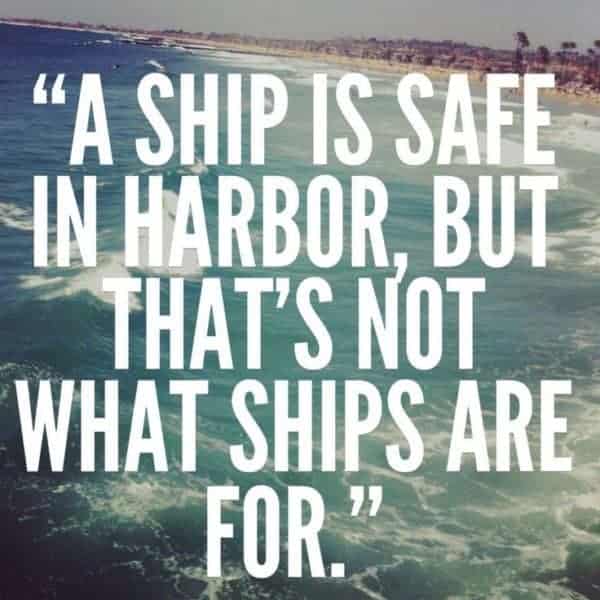Mutual Funds have started getting a decent wallet share at least from major cities in India but are Mutual Fund Risky? Yes!! Let’s check Mutual fund Risk – this post will give you a good idea of:
- Risks of Mutual Funds
- Risk Factors of Mutual Funds
- Low-Risk Mutual Funds
- Risk in Mutual Fund SIP
- Debt Mutual Fund Risk & in other categories
Don’t forget to get our secret weapon to reduce a major Mutual Fund Risk – from the bottom of this post.
Mutual Fund Risk
All investments are subject to some risk. Mutual Fund investments are less risky as compared to direct investment in equity but riskier than Bank Deposits. The degree of risk in mutual funds differs from one scheme to another. This can be due to the investment portfolio, management, and how the underlying investments are affected by micro and macroeconomic conditions.
People don’t understand (or don’t want to understand) risks in mutual funds in India. Check this comment which forced me to write this post. I have heard that Bankers are giving similar suggestions to their clients – Beware!

What are the risks in Mutual Funds?
Let us understand the risks that we have to be aware of different kinds of mutual funds –
| Type of Mutual Fund | Risks |
| Debt Mutual Funds | Interest Rate Risks
Credit Rate Risks |
| Balanced Mutual Funds | Higher exposure to Equity
Debt Holdings |
| Money Market Mutual Funds | Inflation Risks
Opportunity Loss |
| Equity Mutual Funds | Volatility Risks
Performance Risks Concentration Risks |
Risks in Mutual Funds In India
Debt Mutual Fund Risk
Interest Rate Risk – When the interest rate rises, the price of bonds goes down which means you can lose investment value. So you have to invest as per the interest rate movement or better will match investment horizon with debt fund average maturities.
Credit Rate Risk – Bond MFs are dependent on debt instruments. They are rated on the basis of parameters such as safety, quality, returns, and liquidity. If the quality of debt instruments which are part of the MF scheme is bad, you can lose your money. If the bond issuer does not make the stipulated payments, the MF scheme loses value.
New Post – Debt Mutual Fund Risk
The risks in debt mutual funds are complex & it is definitely beyond the 2 points that I have mentioned. You should check 15 types of Risks that affect your investment here
Risks of Balanced Mutual Funds
Higher exposure to Equity – Some fund managers in hope of higher returns, increase exposure to equity and sometimes to volatile equity. This can backfire and the scheme can lose value.
Debt Holdings – If the fund has long-duration bonds and the interest rates rise, the portfolio can lose value.
Risks of Money Market Mutual Funds (Liquid Funds)
These funds fall under the low-risks category of mutual funds but are not risk-free. Normally they don’t play on credit risks but in past, we have seen a few of the fund houses burn their hands by trying this.
Inflation Risk – If inflation is higher than money market returns, your investment loses value.
Opportunity Loss – You will probably get higher returns if you invest in the right equity funds or even other debt funds instead of money market funds. This results in opportunity lost.
Risks of Equity Mutual Funds
Equity funds are considered high risks mutual funds in India due to market volatility.
Volatility Risk – The majority of investment in an equity MF is in equity and equity related instruments. If the market is volatile, there can be fluctuations in the NAV value. If the underlying stocks lose a lot of value, then the NAV will decrease.
Performance Risk – Return on Investment in equity funds is low when the market is not doing well unless the fund manager manages the portfolio very well.
Concentration Risk – If a large proportion of the portfolio is in one stock or one sector, there is a risk of higher losses in case that stock/sector underperforms. Sector/thematic funds can face these risks.
Risks of closed-end Mutual Funds
In every bull market asset management companies behave like asset gathers rather than asset managers. In 2007 they brought a flood of close-ended NFOs (New Fund Offers) – this trend is again visible now. (AMC pay more commission to agents as money will be blocked for few years)
Liquidity Risk – why lock our funds when open-ended funds are available with the same features.
Most of these risks will also apply to insurance products like ULIP – check ULIP or Mutual Fund.
Risk-Free Mutual Funds India
You must have seen this ad – I don’t want to comment but anyone who is looking for a Risk-Free return will get Free Risk. I was surprised by the statement of someone from EPFO – expecting a risk-free return on equity on their contribution. Sahi Hai!! Check – Low-Risk High Return Mutual Fund – is it possible?
Risk in mutual fund SIP
Systematic Investment Plans (SIPs) are a way to invest in Mutual Fund schemes. SIPs are good for regular investment and cost balancing. It is a good tool for people who cannot invest a lumpsum amount in an investment. But the SIP method of investment is not a sure-shot way to gain great returns. If the market was high when you invested but then has kept falling and you did not invest in the SIP method, you would have lost money.
Just imagine if the equity market remains high when you are accumulating & falls when you require that for your goal. That’s why we keep repeating that a rising market is not good for young investors.
What about Fund Manager Risk?
If the fund manager makes mistakes, does not read the market properly, or is not proactive enough to manage the portfolio to avoid lower returns, your investment will suffer. (some time proactive fund managers create a higher risk for their investors)
The fund manager cannot always manage or foresee risks due to political inter conditions and local or global macroeconomics. In such cases, the scheme returns might suffer.
Risk Factors of Mutual Funds
For few investors “Mutual Fund investments are subject to market risks, read all scheme related documents carefully” – has become a joke. Neither they hear the first part about market risks nor they read scheme-related documents. If you read – you may find 5-6 pages on risk. If returns are real Risk of Mutual Funds or any other investment are also real.

Mutual Fund Risk Analysis
Risk-Adjusted Returns
It shows the MF scheme’s returns by measuring how much risk is involved in producing that return. It is defined as a rating or a number. There are formulae to calculate risk-adjusted returns.
Measurement of Risk
There are different ways to measure the risk associated with an MF scheme.
Risk and Return Analysis of Mutual Funds
1) Alpha – It will give an indication of how much more returns did the MF Scheme give in comparison to the benchmark associated with it. A negative alpha will mean that the MF scheme underperformed by that figure as compared to the benchmark.
2) Standard Deviation – It is a measure of difference from the average returns. For example, if the average return is 12% and the standard deviation is 3%, it means the returns can deviate by 3% on the positive and negative sides. So here the returns can range from 9% to 15%.
The higher the volatility, the higher the standard deviation. Higher the risk.
3) Sharpe’s Ratio – This ratio gives the information of how much better has the MF scheme performed compared to risk-free investments. You can know how much you have earned by taking the risk.
4) Beta – It shows the sensitivity of the MF scheme to the market movements or the benchmark. The Beta of the benchmark or market is taken as 1. If the MF scheme has Beta less than 1, it is less volatile and if it is more than 1, it has more volatility as compared to the benchmark/ market.
There are many other rations but these are most commonly used. Ratios of 4 random funds in equity multicap category.
| Fund | Alpha | Beta | Sharpe | Standard Deviation | Downside Risk | Info Ratio Rel. |
| A | 2.32 | 1.08 | 1.05 | 16.52 | 13.06 | 0.77 |
| B | 2.12 | 1.04 | 1.03 | 15.77 | 13.39 | 0.69 |
| C | -5.45 | 1.27 | 0.56 | 20.16 | 17.44 | -0.20 |
| D | -0.04 | 0.71 | 0.69 | 11.04 | 11.00 | -0.84 |
SEBI Riskometer
Sometime back SEBI introduced riskometer – it has 5 levels of risk and every mutual fund house has to specify the risk level for each scheme. Here are the levels what each means –
| Level | Meaning | Which Mutual funds would be covered? |
| Low | Low-risk Investment | Liquid Funds |
| Moderately Low | Investment at moderately low risk | Gilt funds, Short term and Medium-term bond funds, Income funds |
| Moderate | Investment at moderate risk | Balanced Funds, Long term Income Funds |
| Moderately High | Investment at a higher risk | Index Funds, Balanced Funds, Large Cap Funds |
| High | High-risk investments | Small-Cap Funds, Mid Cap Funds, Sector funds |
SEBI also introduced colour codes – like BROWN for low-risk mutual funds, YELLOW for medium risk MF & BLUE for high-risk MF. Not sure why SEBI wants to showcase funds as eatables RED for non-veg.
Risks of Mutual Funds
MF research agencies have their own way to define risk.
Here is a list of some MF and their risk rating by one research agency. They give the fund’s risk grade on the basis of the fund’s risk of loss and downside volatility. Here ‘Low risk’ means that the fund has usually delivered more than how much a risk-free investment would have given.
| Name | Category | Risk Grade |
| SBI Bluechip Fund | Equity | Above Average |
| DSP BlackRock Top 100 Equity Fund – Regular Plan | Equity | High |
| L&T Equity Fund | Equity | Average |
| Baroda Pioneer Short Term Bond Fund | Short Term Debt | Low |
| UTI Gilt Advantage Long Term Plan | Long Term Debt | Average |

(this also applies to your investments)
To invest in mutual funds, you should select MF schemes not only based on past performance. You should evaluate them from various angles including MF risk and then decide your investments. Let us know how you selected MF schemes to invest in and how they fared.
Hope now you have a clear idea of – What are the risks of investing in Mutual Funds. If you liked the post must share it with your friends.
Dear Hemant,
Good article, No one is talking about these risks.
My guess is geopolitical risk like USA vs Nkorea bcoz that can impact world economies.
Hi Sartaj,
That’s part of the market risk.
Good article. Currently the scenario is such that people don’t consider any risk in mutual funds. However, wherever there is money, there will always be a risk. The level of risks might be different, but it will be there.
A mutual fund’s NAV is dependant on the value of the underlying stocks. If, for some reason, a majority of the investors in a fund decide to redeem their units, the fund will have no option but to sell the shares at whatever price it gets. The net effect will be that the NAV of the fund will fall down and the investor will get a lesser amount than that expected. So what you see is not necessarily what you will get. I believe that mutual funds have to keep aside a certain amount to consider redemptions but if the redemptions are more than that then the above scenario might occur. It’s a somewhat hidden risk.
In current scenario, a good performing mutual fund flooded with investors money, is a headache for fund manager and investors as well. This is a major risk resulting into such funds becoming under performer in future. This is my guess.
Another Risk, that you missed would be, its the same number of companies that are there in Stock market with pretty much same fundamentals over the last few years.. However Mutual funds are pumping in thousands of crores, every month into the market buying the same stocks again and again at higher valuations.. Don’t you think that would result in a bubble at some point???
Great article. One of the risk that is coming up is “High cash levels” in MFs. With retail investors pumping a lot of money fund managers are finding it difficult to invest and as a result cash holding is increasing. This is happening mostly with the equity oriented funds. Holding cash in MF beyond certain percentage will affect performance and ultimately affect the NAV. Necessary changes must be made in the portfolio to pave the way for the excess cash to be converted into investments.Cash is not a productive asset.Hence holding it beyond required level will reduce the performance of MF.
In my view we should avoid funds with very high AUM and should also look at cash ratio before finalizing the fund.
Article is great………but I do not agree with his analysis. Instead of purchasing SHARES, mutual fund manger will buy selected shares with our money……..means diversification will be there through FUND MANAGERS purchasing method.
Definitely, mutual funds giving good return in long-term………They depend upon markets. Markets depend on EVERYTHING…..i.e. Depend upon LOCAL, NATIONAL and INTERNATIONAL matters…..
There is always risk with money in any place, in BANKS, GOLD, SHARE MARKET or in any other forms………..I HOPE in future BANKS will collect money from us for keeping money safely in their banks………….MEANS instead of paying that low interest to us, they will collect money from us for keeping our deposits with them………I think it will start in 5-10 years. Its my view about present banks………
Please choose funds wisely as their previous track record. Its my advise to all our readers…………Thank you Mr. Hemant Beniwal for your time.
With Regards,
Srinivasa Vutukuri
Thanks for sharing your views.
Sir,
Can u explain the difference between Large cap, Mid Cap, Small Cap and risk involved in them?
Also please explain which one is better RD, FD or SIP
Please go to archives and read what Hemant has written way back in 2010, 11, 12, 13.
It is very informative, and as applicable today as it was in those years.
As usual you have put across your point of view in a lucid and convincing manner. But yes, there are risks involved in mutual fund investments. In case of equity mutual funds there are market risks and in case of debt mutual funds there are credit risks and risks associated with sudden downgrades from credit rating agencies
Hi, Hemant, Nice and timely article, In the present bullish scenario where everyone is gung-ho about
mutual funds, the AUM size is increasing enormously. Funds with 30-40 stocks are holding 70-80 stocks.
This may result in over-diversification or ‘diworsification’ which will reduce the returns and as such constitutes a risk!
Regards
Hi hemant very good and inormative article. Unless any major upsets in market.In long run SIP is very good option for wealth creation for common 9-5 job person whose only earning is salary.which fund you choose that really matter
Tail Risk
not taking risk is itself a big risk.
Mr.Hemant,U will not believe,but 4m today I hv started learning 4m 0 ..abt share market.etc..saw many videos and listened talks…liked one beautifully diagramatically made video and other explanations gvn by u…The most imp.risk I feel as new learner is Sudden ups and downs Whc can change the whole scenario…
Thanks for sharing Swarn
Sir,
I have started SIP of Rs 10000 from this month(Feb 2018).My agent told me to invest for unlimited period.As I am totally new with respect to mutual fund investing i followed his advise so my SIP will be over in 2101 according to the email confirmation given by respective mutual funds.But now i feel I should have invested for 10 yrs only.If i withdraw the invested amount after 10 yrs what will be the exit load?
Dear Hemant,
It is a Nice article…
I believe that the Biggest risk is lack of “financial education and Proper Guidance”.
Need your Opinion on it.
Reason is, until the moment, people are not financially educated, the decision are on trust or emotions instead of understanding facts.
It is just similar to have a car without proper knowledge of driving it.
A lot of Other things to share,
1. Could have mentioned Expense ratios, and how it is determined/affect corpus
2. You left out explaining these 2 parameters
Downside Risk
Info Ratio Rel.
Overall very good article.
can you please explain which one is better RD, FD or SIP.
Thank you
Comments are closed.